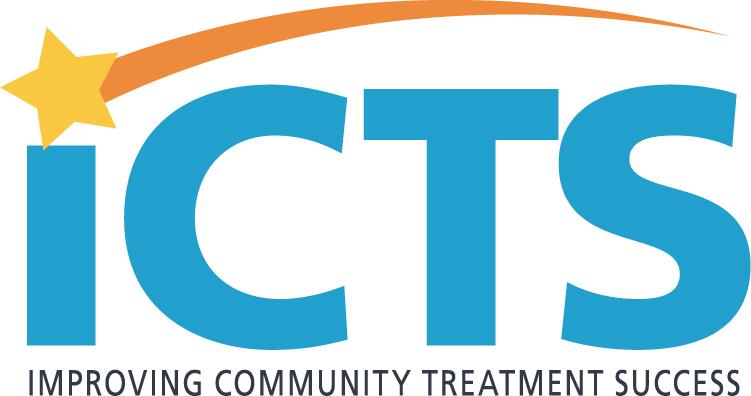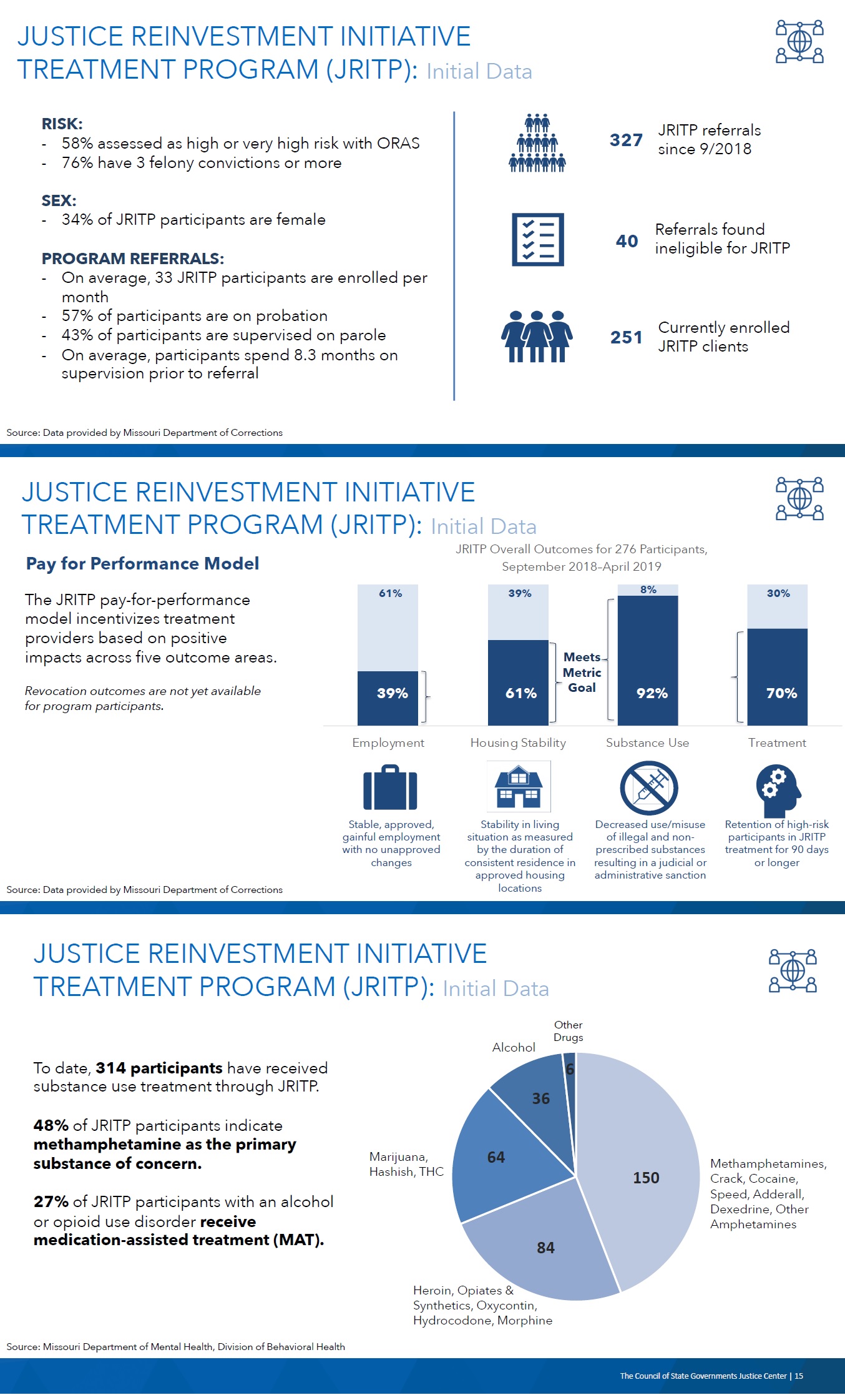

Watch a video about ICTS participants celebrating their successes.
Treatment Program
The ICTS program’s aim is to reduce the (re)incarceration of behavioral health consumers under Division of Probation and Parole (P&P) supervision by ensuring that significant criminogenic needs are addressed in the community.
In 2018, the Missouri Department of Corrections was appropriated funds to establish and implement a community behavioral health program to provide comprehensive community-based services for people under MODOC supervision who have substance use disorders and/or co-occurring substance use disorders and mild to moderate mental illness, and are considered high risk for reoffending. The Justice Reinvestment Initiative Treatment Pilot (JRITP) has since expanded and progressed beyond the pilot stage, prompting a name change to better reflect the program’s objective: Improving Community Treatment Success (ICTS) for justice-involved clients.
Participating Counties
In 2018, Boone, Buchanan and Butler counties were selected to pilot JRITP/ICTS. In 2019, the program expanded to Greene and Polk counties, and in 2020, the program further expanded to Cole, Pettis, Phelps, Pulaski and St. Francois counties and, in 2021, to Camden and Miller counties. Counties are selected based on factors such as crime rates, sentencing trends, and existing corrections and behavioral health resources. Individuals with opioid use disorder are given priority entry. By August 2020, 615 Missourians had been served by the ICTS program.
Accountability
The ICTS program is based on accountability. The program measures performance of behavioral health providers to ensure services improve both public safety and recovery outcomes. P&P staff work on a team with local behavioral health treatment and recovery providers to ensure people on supervision who are at high risk of reoffending and have behavioral health needs receive individualized evidence-based treatment in the community. To ensure accountability, frequent, random drug testing is a requirement of participation in the program. To allow for more drug testing consistency across sites, providers often contract with an outside urinalysis collection agency. This frees up staff time, and allows for a greater frequency of collection and for more randomized tests. Also of importance is the use of aftercare in recovery.
Housing
The ICTS program has continued to evolve and expand. Each program site now is equipped with one housing specialist to help participants navigate housing barriers. For transient participants in need of a sober-living environment, housing can be provided. Transitional housing must be accredited by the National Alliance for Recovery Residences (NARR) and must provide a safe, appropriate, substance- free housing option in the community. Columbia and Springfield have been successful in engaging in partnerships with local NARR providers to expand supportive housing options.
Employment
Much like the role stable housing can play in someone’s recovery, employment is also an important factor in offender success. Each ICTS site has an employment specialist; in February 2020, all received formal training on best practices that can help justice-involved individuals reach their vocational goals. the Department of Mental Health is able to provide technical assistance with training, job development and employer engagement to develop a strong foundation.
Aftercare
Aftercare services have also been made available for ICTS participants transitioning out of the program. During aftercare for up to six months, clients have access to a peer support specialist who conducts wellness checks. In light of COVID-19 challenges, all ICTS sites have been creative in their efforts to keep participants safe, connected,
and stabilized. Providers and P&P officers have conducted aggressive outreach, curbside check-ins, virtual treatment
visits and self-help groups, along with offering assistance for participants with communication barriers to stay connected and engaged.

